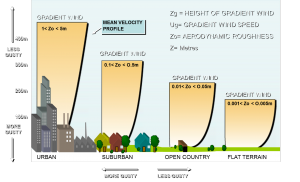News
What is wind speed?
It’s a simple question, right? In a thunderstorm, television weather reporters might speak about sustained winds of 50 kilometers per hour (31 mph) with gusts as high as 100 (62 mph). And to coastal residents, the difference in wind speed between a tropical storm and a Category III hurricane makes a world of difference. We intuitively know what wind speed is. Or do we?
Not all wind speeds are the same. When meteorologists, atmospheric scientists, and wind engineers discuss wind speeds, we have to make sure we’re working to the same standards. Many factors come into play that can yield very different wind speed measurements for the same event.

Height of measurement: Mean wind speeds generally increase as you move up above the ground. A measurement height of 10 meters (33 feet) has become de rigueur for most of today’s airport anemometers, but private anemometers can be located just about anywhere.
Frequency of measurement: Measuring wind speeds at the top of the hour might be sufficient for a breezy summer day. But if an afternoon thunderstorm rolls in at 2:15pm, your 3:00 measurement may miss it altogether. When comparing historical wind records, it’s important to know exactly when measurements took place, not just averaged statistics.
Surroundings: An anemometer located in the middle of Manhattan will record different wind speeds than one sited in the harbor, even during the same wind event. Knowing how the surrounding environment affects wind is important when comparing differing measurements of the same storm.
Averaging time: Even the briefest measurement takes place over a finite period of time. That period is known as the averaging time, and it’s impossible to compare two wind speeds without knowing it. For years, scientists and engineers used what is known as the fastest mile wind speed, which is the average speed at which an imaginary airborne particle would travel in moving a mile downstream. Most wind professionals today use a peak three-second gust wind speed to define wind loads, which is the highest average speed measured over a three second time period. And mean hourly wind speeds are useful in characterising a location’s general climate.
When you’re working with wind speeds, it’s easy to inadvertently compare apples to oranges. Understanding the different ways that wind speed measurements can vary is critical for making informed decisions about structural foundations, cladding, and exhaust systems.
Trust the wind engineering experts at CPP to offer solid advice based on our thorough and detailed understanding of wind. Contact CPP today to learn how our years of experience can make your next project safe, comfortable, and efficient.
